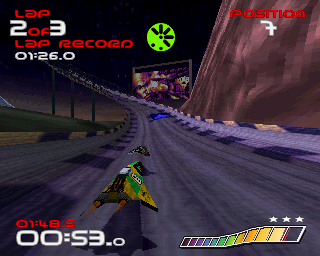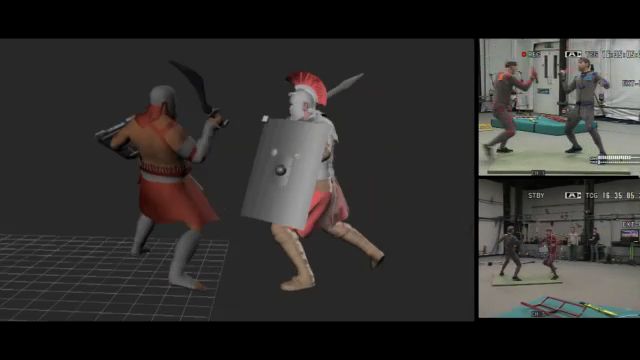This week I will be discussing people I believe have greatly contributed to the advancement of 3D graphics and technology in the gaming industry.
John Carmack and ID Software
John Carmack has always pushed the graphics capabilities of video games on a technical level, from the early days of pitching Super Mario Brothers on PC to Nintendo and failing, to creating amazing game engines that push boundaries on technology.
Wolfenstein 3D was one of the earliest examples of Johns work going beyond what people expected at the time. In the early 90s, games like Crystal Caves, Space Quest and 8-Bit console games like Super Mario were dominating the market. John Carmack created a game engine capable of rendering 3D-esque environments with textured walls and 2D sprite characters that gave the illusion of 3D depth.
Bang bang! Wolfenstein 3D by ID Software
Folloing the success of Wolfenstein, Carmack built upon the Wolfenstein game with DOOM. Doom took the same formula and added lights, higher definition textures and larger levels than Wolfenstein. DOOM was downloaded so much it caught the attention of Bill Gates and he used it to promote Windows 95 with "DOOM 95"
Doom, a huge success for ID Software
While both Doom and Wolfenstein 3D were not true 3D, John Carmack worked on a series that would take advantage of polygons with the Quake series. Using 3D models with skeleton rigs, true polygon levels and an efficient game engine that scaled well to PCs Quake 1-3 brought 3D games into a new light. The Quake 2 and Quake 3 engine were so advanced and powerful, other developers wanted to take advantage of it, ID software allowed developers to buy licenses for ID Technology, which helped one of the biggest game companies in the world, Valve to show their creative expertise with the highly acclaimed Half-Life series.
Quake 3 Arena: Amazing graphics that took advantage of hardware at the time like no other games before it
Quake engine games can still be seen today, albeit modified versions of the engine, such as in the Call of Duty franchise.
The latest iteration of ID Tech allows for unlimited texture layers in their came using a Virtual Texturing method that super compresses a massive texture file into something more manageable. The engine also runs at a stable 60fps even on older game consoles.
Epic games started out as a very simple garage gaming company that made simple 2D games such as Epic Pinball, Jazz Jackrabbit and Jill of the Jungle. When Epic games dived into 3D however, much like John Carmack they made waves by creating an amazing game engine known as Unreal Engine.
Unreal Engine has been competing with Quake engine in the middleware software world for well over a decade now, and due to its powerful tools has become a favourite for developers around the world who do not want to spend the money making their own engine.
Jazz Jackrabbit, a 2D platformer by Epic games
Unreal Engine 4: Creating close to CG graphics in real-time game environments
Throughout the life cycle of the Unreal Engine, graphical effects such as normal mapping, parallax occlusion mapping, real time reflections and dynamic lighting have all made Unreal Engine stand out from the competition, while still running extremely well on reasonable mid-tier computer specifications.
Much of the technology we see today, we take for granted, but coming from pixels to fully rendered and realistic 3D visuals has taken time. I believe ID Software and Epic Games are prime examples of pioneers pushing 3D in ways we never thought possible
The Democratisation of 3D graphics.
It was not too long ago that 3D software was a mystery to everyone. When people saw 3D on TV, they could only imagine how such images came about. Movies like Star Wars and Tron demonstrated the possibilities, but never outright showed people how it was done.
Technology and 3D software used to be expensive, so expensive that only companies could afford the computers powerful enough to create 3D images and film and the software tools that created them.
Thankfully, technology has caught up with mainstream society and anyone can afford a computer capable of running 3D software. Software developers are also giving out software licenses, game engines and other tools for free, or a much more affordable price than before. This allows more people to experience and used 3D software and more creativity in the industry where it may not have been possible.
With technology also becoming so intertwined in everyday life, we now also have access to more people and potential clients or businesses who need people in the 3D field. Not only that but smaller companies or groups can start projects themselves for much less than before.
This democracy of 3D is a welcome and wonderful thin in this time and age. Anyone can pick up something that was once out of reach and try it and show their work online and to a broad audience.
References:
Challenges of iD Tech 5 J.M.P. van Waveren
http://s09.idav.ucdavis.edu/talks/05-JP_id_Tech_5_Challenges.pdf











